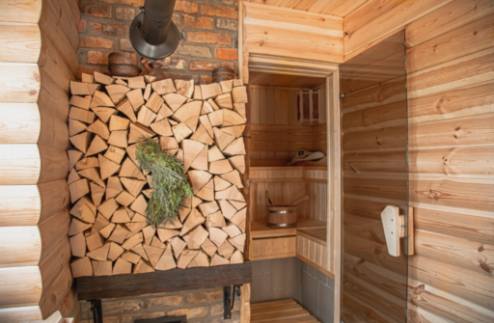Understanding the Different Types of Wood-Burning Stoves
22 November 2025 by Jasper D.Wood-burning sauna stoves are a popular choice for those looking to create a cozy and relaxing sauna experience in their own home. With a variety of options available on the market, it's important to understand the different types of wood-burning stoves to ensure you choose the right one for your needs. From maintenance tips to safety precautions, this article will provide you with all the information you need to make the most out of your wood-burning sauna stove.

Maintenance Tips for Wood-Burning Sauna Stoves
Maintaining a wood-burning sauna stove is essential to ensure its longevity and efficiency. Here are some important maintenance tips to keep your stove in top condition:Regularly inspect and clean the stove: It is important to regularly inspect your wood-burning sauna stove for any signs of damage or buildup. Clean out any ash, soot, or creosote that may have accumulated in the stove to prevent blockages and improve airflow.
Use dry and seasoned wood: Burning wet or unseasoned wood can lead to the buildup of creosote in the stove and chimney, increasing the risk of a chimney fire. Make sure to use only dry and seasoned wood to reduce creosote buildup and ensure efficient burning.
Check the door gaskets: The door gaskets on your wood-burning sauna stove should create a tight seal to prevent heat loss and ensure efficient combustion. Regularly check the gaskets for any signs of wear or damage, and replace them if necessary.
Monitor the chimney: It is important to regularly inspect and clean the chimney to prevent creosote buildup and reduce the risk of a chimney fire. Hire a professional chimney sweep at least once a year to thoroughly clean the chimney and ensure its safety.
Maintain proper airflow: Adequate airflow is essential for efficient combustion in a wood-burning sauna stove. Make sure the air vents are open and free from obstructions to allow for proper airflow and efficient burning. By following these maintenance tips, you can ensure the safe and efficient operation of your wood-burning sauna stove for years to come.
Efficiency Comparison: Traditional vs. Modern Wood-Burning Sauna Stoves
Wood-burning sauna stoves have come a long way in terms of efficiency, with traditional models being replaced by modern designs that offer improved performance. When comparing traditional and modern wood-burning sauna stoves, there are several key factors to consider. One of the main differences between traditional and modern wood-burning sauna stoves is their heating efficiency. Traditional stoves often require more wood to reach and maintain the desired temperature, leading to higher fuel consumption and increased costs. In contrast, modern wood-burning sauna stoves are designed to be more efficient, producing more heat with less wood. This not only saves money on fuel, but also reduces the environmental impact of using a wood-burning stove. In addition to improved heating efficiency, modern wood-burning sauna stoves also offer better control over temperature regulation. Traditional stoves can be difficult to adjust, leading to uneven heat distribution and potential overheating. Modern stoves are equipped with advanced features such as air vents, dampers, and thermostats that allow for precise temperature control. This ensures a more comfortable and consistent sauna experience for users. Another important factor to consider when comparing traditional and modern wood-burning sauna stoves is their maintenance requirements. Traditional stoves often require more frequent cleaning and maintenance due to their simpler design. Modern stoves, on the other hand, are typically easier to clean and maintain, with features such as ash pans and removable grates that make upkeep a breeze. Overall, modern wood-burning sauna stoves offer significant advantages over their traditional counterparts in terms of efficiency, temperature control, and maintenance. Investing in a modern wood-burning sauna stove can lead to cost savings, a more enjoyable sauna experience, and peace of mind knowing that you are using a more environmentally friendly heating option.Safety Precautions When Using Wood-Burning Sauna Stoves
Here are some key safety precautions to keep in mind:Proper Ventilation: Ensuring that the sauna room is well-ventilated is essential when using a wood-burning stove. Adequate ventilation helps prevent the buildup of carbon monoxide, which can be dangerous if inhaled in high concentrations.
Regular Maintenance: It is important to regularly inspect and maintain the wood-burning stove to ensure that it is functioning properly. This includes checking for any cracks or damage in the stove, cleaning out any debris or ash buildup, and replacing any worn-out parts as needed.
Fire Safety: When using a wood-burning stove, it is important to follow fire safety protocols to prevent accidents. This includes keeping flammable materials away from the stove, using a fire extinguisher nearby, and never leaving the stove unattended when it is in use.
Installation: It is crucial to have the wood-burning sauna stove professionally installed to ensure that it is done correctly and safely. Improper installation can lead to fire hazards or other safety risks.
Supervision: It is important to never leave children or pets unattended in the sauna room when the wood-burning stove is in use. Supervision is key to prevent accidents and ensure the safety of all individuals in the sauna. By following these safety precautions when using wood-burning sauna stoves, you can enjoy the benefits of a sauna experience without compromising on safety.